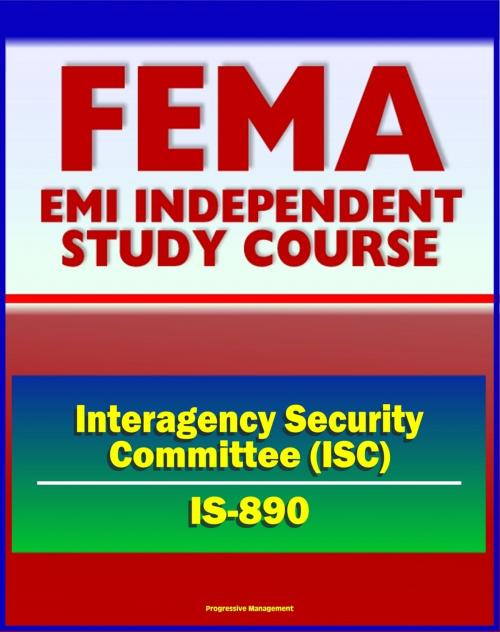21st Century FEMA Study Course: Introduction to the Interagency Security Committee (IS-890) - ISC History, Vulnerability Assessment of Federal Facilities, Security Levels
Nonfiction, Social & Cultural Studies, Political Science| Author: | Progressive Management | ISBN: | 9781466000391 |
| Publisher: | Progressive Management | Publication: | July 16, 2011 |
| Imprint: | Smashwords Edition | Language: | English |
| Author: | Progressive Management |
| ISBN: | 9781466000391 |
| Publisher: | Progressive Management |
| Publication: | July 16, 2011 |
| Imprint: | Smashwords Edition |
| Language: | English |
This Federal Emergency Management Agency (FEMA) independent training course manual from the Emergency Management Institute (EMI) provides an overview of the history of the Interagency Security Committee (ISC), its mission and organization, and a basic outline of the ISC risk management process.
The purpose of this series of courses is to provide Federal facility security professionals, engineers, building owners, construction contractors, architects, and the general public with basic information pertaining to the ISC and its facility security standards, processes, and practices.
Course Objectives - At the end of this course, the participants will be able to:
Explain why the ISC was formed.
Describe the history, vision, and mission of the ISC.
Identify key historical ISC documents.
Describe the composition of the ISC.
Describe the functions of the ISC and ISC subcommittees and working groups.
Identify how ISC standards are used to identify needed security requirements and enhancements.
Describe the steps to identify, implement, and test the effectiveness of security requirements for a Federal facility.
Primary Audience - Federal security professionals responsible for protecting Federal facilities in the United States, as well as construction industry managers who are involved in Federal facility construction and renovation projects.
Topics covered include: ISC history, vulnerability assessment of federal facilities, federal facility standards, risk management process, facility security levels, and design basis threats.
This is a privately authored news service and educational publication of Progressive Management.
This Federal Emergency Management Agency (FEMA) independent training course manual from the Emergency Management Institute (EMI) provides an overview of the history of the Interagency Security Committee (ISC), its mission and organization, and a basic outline of the ISC risk management process.
The purpose of this series of courses is to provide Federal facility security professionals, engineers, building owners, construction contractors, architects, and the general public with basic information pertaining to the ISC and its facility security standards, processes, and practices.
Course Objectives - At the end of this course, the participants will be able to:
Explain why the ISC was formed.
Describe the history, vision, and mission of the ISC.
Identify key historical ISC documents.
Describe the composition of the ISC.
Describe the functions of the ISC and ISC subcommittees and working groups.
Identify how ISC standards are used to identify needed security requirements and enhancements.
Describe the steps to identify, implement, and test the effectiveness of security requirements for a Federal facility.
Primary Audience - Federal security professionals responsible for protecting Federal facilities in the United States, as well as construction industry managers who are involved in Federal facility construction and renovation projects.
Topics covered include: ISC history, vulnerability assessment of federal facilities, federal facility standards, risk management process, facility security levels, and design basis threats.
This is a privately authored news service and educational publication of Progressive Management.















